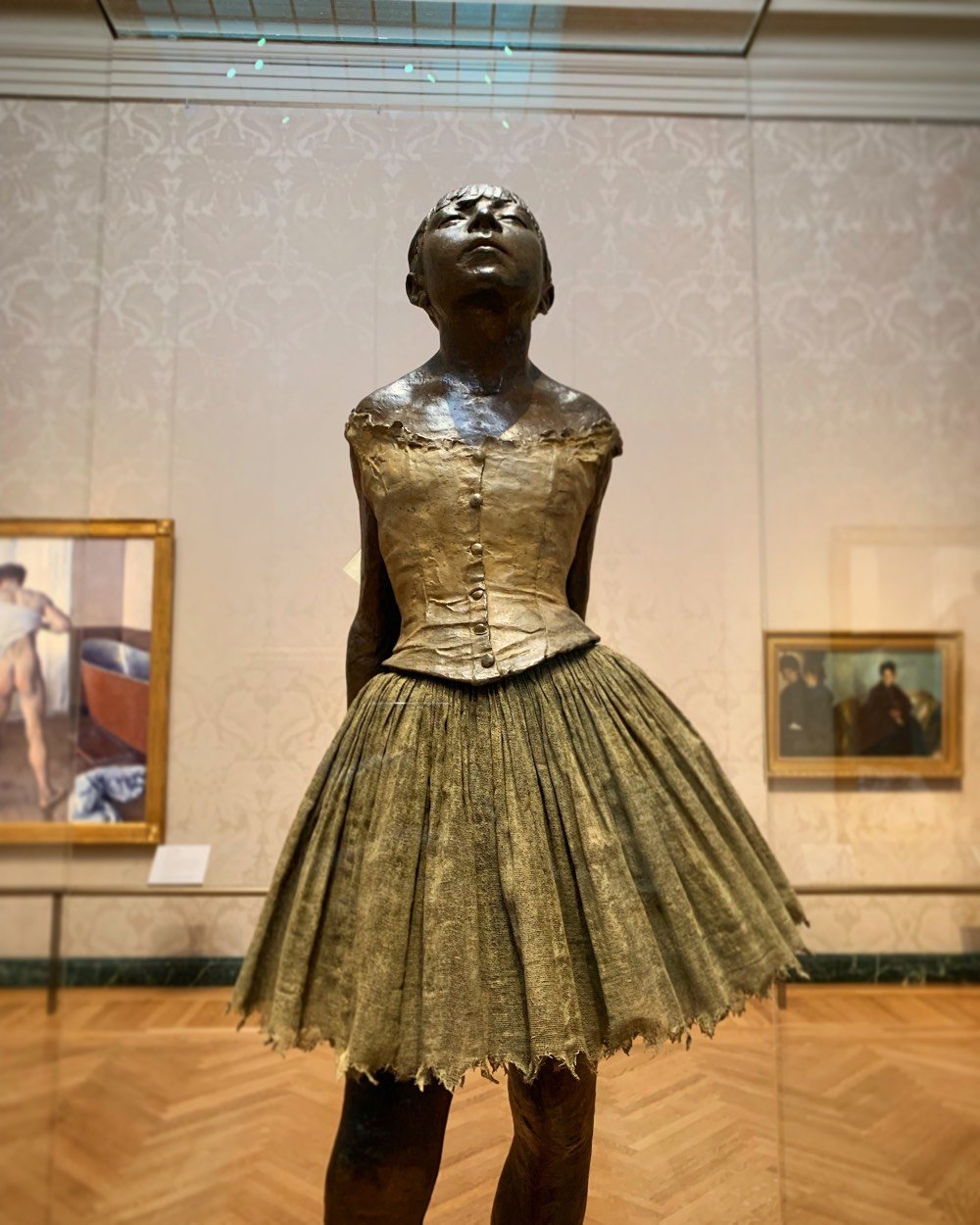Dancer Misty Copeland Recreates Degas Ballet Paintings & Sculpture

As part of their NYC Dance Project and in partnership with Harper’s Bazaar, photographers Ken Browar and Deborah Ory photographed Misty Copeland, a principal dancer with the prestigious American Ballet Theatre, recreating scenes from the works of French artist Edgar Degas. Above, Copeland poses as the subject of Degas’ La Petite Danseuse de Quatorze Ans (Little Dancer of Fourteen Years) dressed in a $9000 Alexander McQueen dress & corset.
The Harper’s piece vaguely hints at his representation of the ballerinas being “far from sympathetic” but as Julia Fiore wrote in The Sordid Truth behind Degas’s Ballet Dancers, the reality of the Parisian ballet that he was depicting was unsettling.
The formerly upright ballet had taken on the role of unseemly cabaret; in Paris, its success was almost entirely predicated on lecherous social contracts. Sex work was a part of a ballerina’s reality, and the city’s grand opera house, the Palais Garnier, was designed with this in mind. A luxuriously appointed room located behind the stage, called the foyer de la danse, was a place where the dancers would warm up before performances. But it also served as a kind of men’s club, where abonnés — wealthy male subscribers to the opera — could conduct business, socialize, and proposition the ballerinas.
Degas himself did not partake in this scene; he was a misogynist celibate, a Belle Époque incel if you will:
For Degas, the fact that young dancers had sex with old men read not as abuse on the part of the latter but as sin on the part of the former. He assumed girls’ transactions with powerful men meant they could pull strings from behind the scenes, a thought that elicited both horror and fascination. Degas clearly saw something vital in his recurring subjects, who spurred quotes from him like, “I have locked away my heart in a pink satin slipper.”
Degas’ disdain for women — and ballerinas in particular — is writ across “Little Dancer” itself, whose sculptural features were altered to emphasize van Goethem’s moral degeneracy. Degas subscribed to physiognomy, which presumes that criminal behaviors are passed on genetically and thus manifest in physical features. And so he flattened van Goethem’s skull and stretched her chin so she appeared especially “primitive,” a visual reflection of an internal state.
The subject of La Petite Danseuse de Quatorze Ans, Marie van Goethem, did not remain a ballerina for that long after posing for the sculpture:
Marie van Goethem was the “petit rat” who posed for the sculpture, and she likely engaged in the sexually predatory economy of the ballet world to survive. Van Goethem disappeared from the public eye shortly after the sculpture was completed; after being late to a rehearsal, the Paris Opera Ballet dismissed her. The teenager probably returned home to follow in the footsteps of her mother — a laundress and likely prostitute — and older sister, who was also a sex worker.
I wonder if the photographers were aware of this context when taking these photos? Is there something about the photos, about Copeland’s life story or status as a prominent Black ballerina, or about dressing her in thousands of dollars of contemporary couture that subverts Degas’ work and its themes? If so, I’d be fascinated to read an expert analysis that explored these issues. (via cup of jo)







Stay Connected